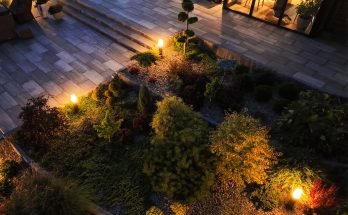Are you planning to give your home’s exterior a fresh new look? Painting will help you reap the benefits of updating your home’s exterior, and doing so properly will ensure the best return on investment. Welcome to the guide to mixing colors for your home’s exterior paint job! Here, we will explore the world of colors and help you create a beautiful and harmonious palette that reflects your personal style and complements your home’s architecture. Let’s dive in!
Considering the Style and Architecture of Your Home
Choosing colors based on your home’s architectural style can help create visual harmony and boost curb appeal. Below are some suggestions for the two most popular home styles: traditional and modern. Remember that these are just guidelines to jumpstart your creative process! Don’t be afraid to experiment and trust your instincts.
Traditional
Stick to classic colors like whites, grays, and beiges for the base, and pair them with muted shades of blue, green, or red as accent colors. This helps you maintain a subtle, rustic look while still exploring beautiful color pairings.
Modern
Embrace bold contrasts. Think dark colors like charcoal black, emerald blue, or forest green paired with bright white accents or even metallic paints. Though eye-catching, these combinations are pleasing to look at and command presence on the block.
Using Color Psychology To Create Ambience
Color psychology explores how colors influence our emotions and behaviors. If you want your home’s color scheme to focus on creating an ambience instead of matching your home’s style, then check out these potential combos:
- Calmness: Soft blues and greens, paired with crisp white or sandy beige tones, create a serene atmosphere that promotes relaxation and tranquility.
- Vibrancy: Bright yellows, oranges, or reds can invigorate and energize your exterior. Balance these bold hues with neutral accents to ensure your home doesn’t become overly stimulating.
- Sophistication: Darker, more muted colors, such as eggplant or navy blue, convey elegance and maturity. Pair these with light or metallic accents to create a rich, refined look.
Practical Tips for Mixing Colors
Now that you have a solid understanding of color categories, your home’s architectural style, and color psychology, here are some practical tips to help you create the perfect palette:
- Choose complementary and contrasting hues to balance your color scheme. A harmonious combination of opposites can give your home a polished, cohesive look.
- Use accent colors to highlight architectural features, such as doors, window trims, or shutters.
- Consider lighting conditions when making your final color choices, as colors may appear differently under direct sunlight, overcast skies, or streetlights.
As you embark on your painting project, remember that this guide to mixing colors for your home’s exterior paint job is here to help you achieve a stunning result. Switching up color is just one of the many ways to make your home’s exterior more attractive, too! Change the siding, paint the door—your options are endless. Unleash your inner Picasso and let your home’s façade become your canvas!




